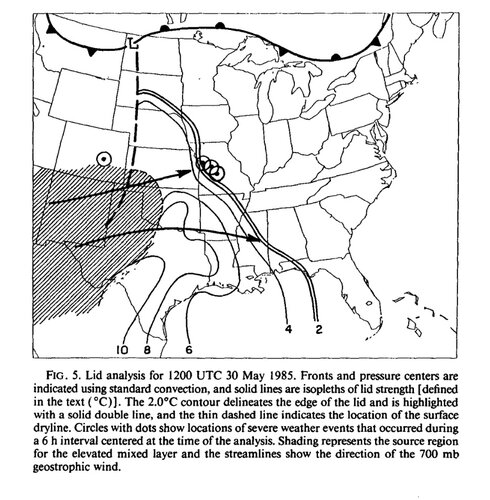gdlewen
EF4
This is more of a history question, but after 2007 or so there seem to be no references in the literature to lid analysis of sounding data, as described in Carlson, T., and Farrell R. J. , 1983: The lid strength index as an aid in predicting severe local storms. Natl. Wea. Dig., 8 (2) 27–39. (As well as others by Carlson and his students/colleagues in the mid-late 80's and early 90's.)
Was the technique found to be too difficult to implement operationally? unreliable? or perhaps superseded by the continued development of numerical weather prediction models?
I'm not sure if Stormtrack is the best forum for posting a question like this. Before their demise, WX-TALK or WX-CHASE would have been the best targets. (Hopefully, maybe someone here on Stormtrack can recommend a forum for this question if this is not a good venue.)
Many Thanks.
Was the technique found to be too difficult to implement operationally? unreliable? or perhaps superseded by the continued development of numerical weather prediction models?
I'm not sure if Stormtrack is the best forum for posting a question like this. Before their demise, WX-TALK or WX-CHASE would have been the best targets. (Hopefully, maybe someone here on Stormtrack can recommend a forum for this question if this is not a good venue.)
Many Thanks.


